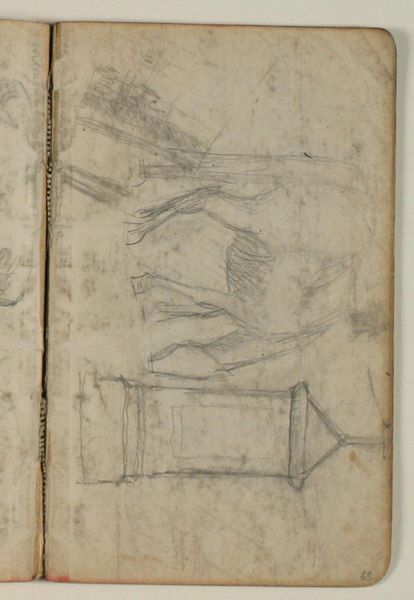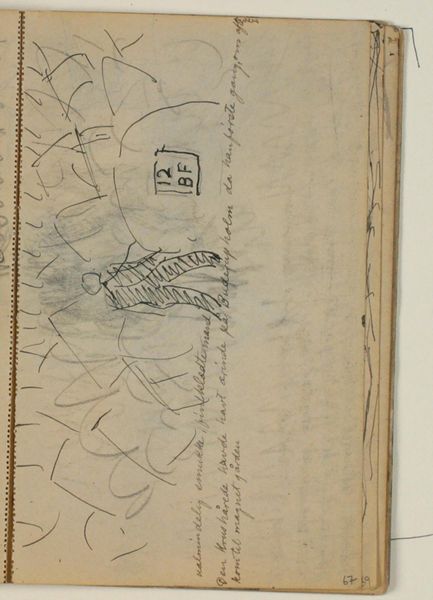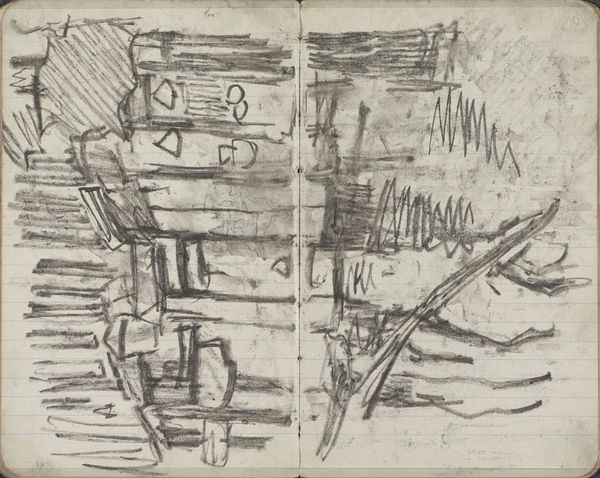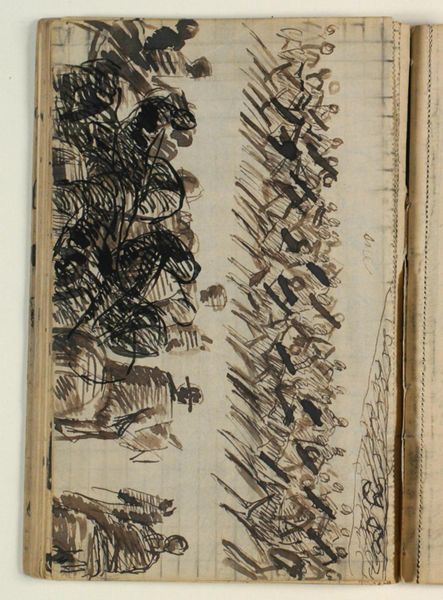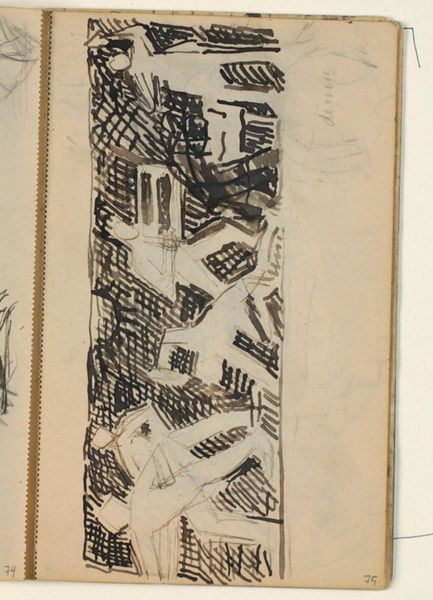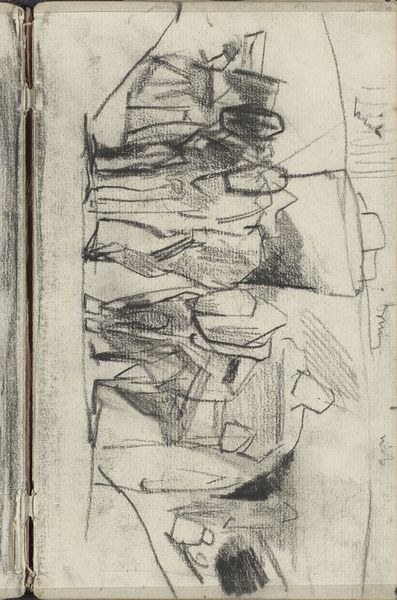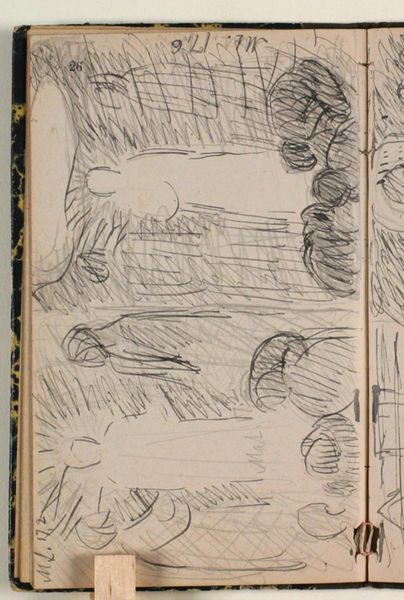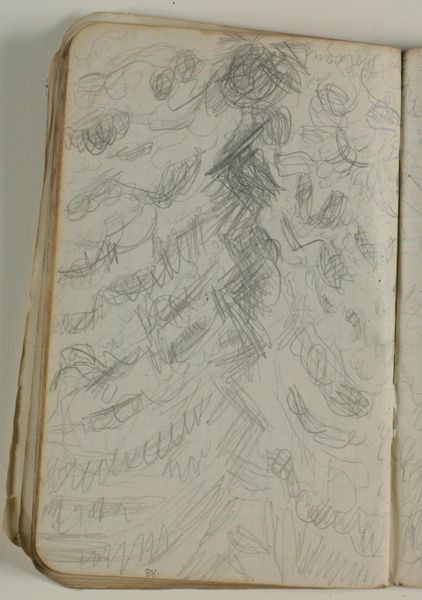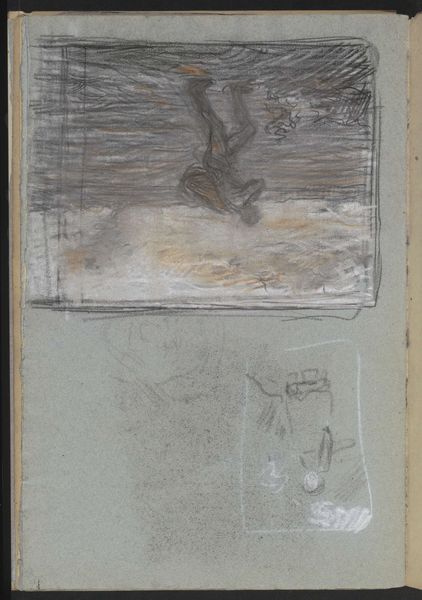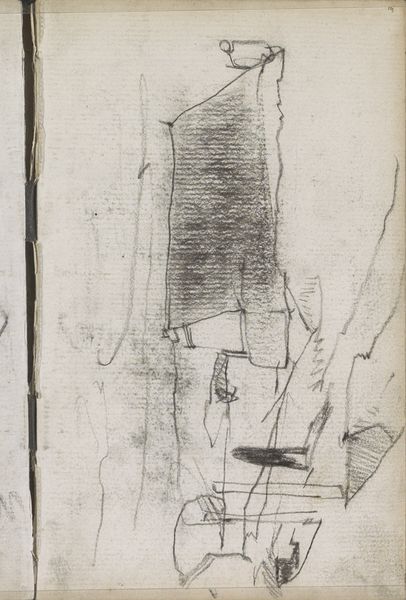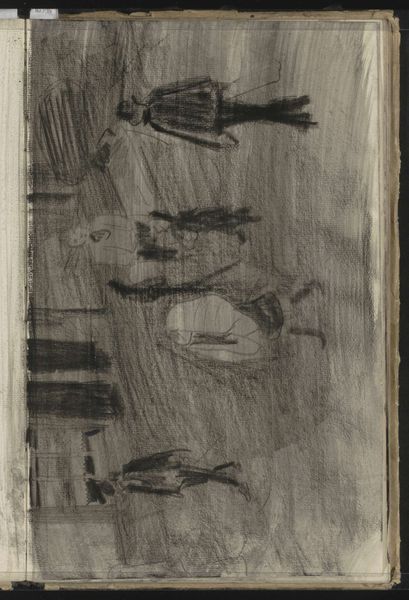
Figurkomposition - udkast til relief om forskellige håndværk? 1932 - 1935
0:00
0:00
drawing, ink
#
drawing
#
ink painting
#
figuration
#
ink
#
modernism
Curator: Looking at Niels Larsen Stevns's ink drawing from between 1932 and 1935, titled "Figurkomposition - udkast til relief om forskellige håndværk?", one immediately thinks of the energy concentrated in this composition. Editor: Yes, there’s a raw, almost urgent quality to the lines. The figures seem caught in moments of intense physical activity. There's definitely a dynamism conveyed in its form and material! Curator: Given the period, and the title referencing craftsmanship, this preliminary study can be viewed within a broader discussion of social realism and the glorification of labor during a tumultuous economic time, thinking particularly of gendered access and expectations around labour. Editor: I am fascinated by Stevns’ choice of ink here. The stark contrast of dark and light amplifies the sense of labor, doesn't it? It feels like a direct engagement with the materiality of work. Curator: Indeed, ink drawings allowed for relatively quick execution and wide distribution. One could see this sketch as being reproduced, scaled up and serving propagandistic purposes, reflecting the artist's political commitments during the interwar period. But who is seen here? Where are the women? Editor: I agree that there's something incomplete about this. The absence you highlight suggests questions around labor hierarchies and the values associated with those distinctions; but the rapid strokes feel appropriate. Stevns clearly prioritized process, perhaps hinting at the frenetic pace of industrial work. The sketches of hammers outside the main drawing push the theme home as well. Curator: A sharp point. Looking through the lens of contemporary feminist theory, we might interpret Stevns’ exclusion of women from this initial sketch, regardless of intentionality, as an erasure of women’s work within broader societal depictions of craft. Editor: Exactly. This initial vision of male-dominated labour makes a poignant statement by way of absence and perhaps shows us just how the medium helps encode social norms. Curator: Ultimately, "Figurkomposition" offers a powerful commentary on labour and identity in the early 20th century and beyond, leaving space for reflections on power. Editor: Agreed, I feel as if this raw sketch unveils the mechanisms of its own creation and how these figures in labor become part of a much wider discussion regarding consumption, social class, and gender.
Comments
No comments
Be the first to comment and join the conversation on the ultimate creative platform.
